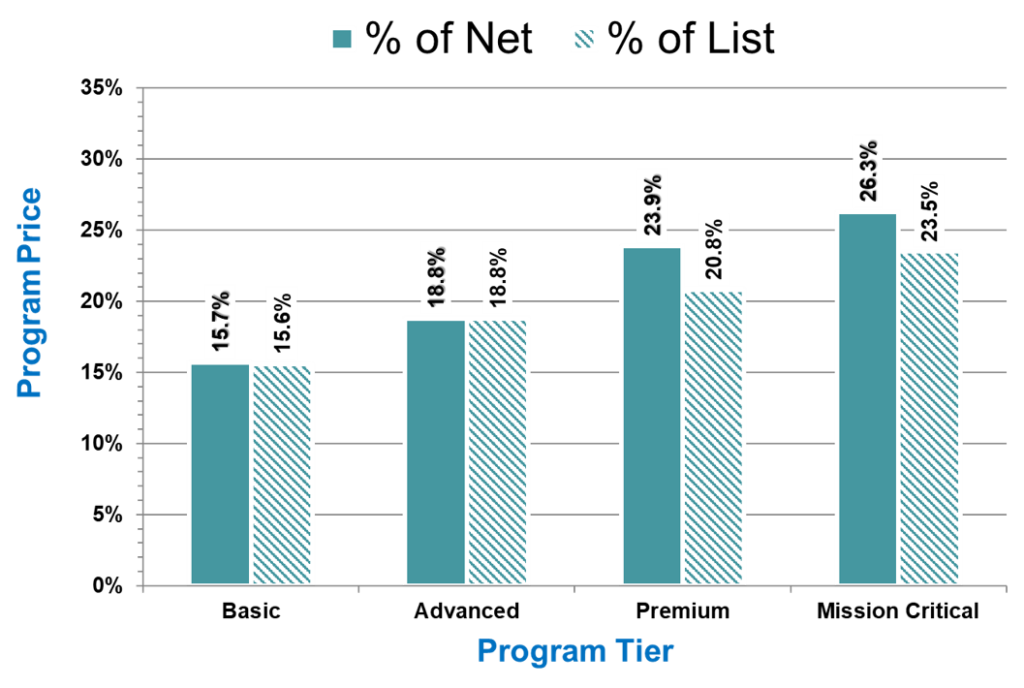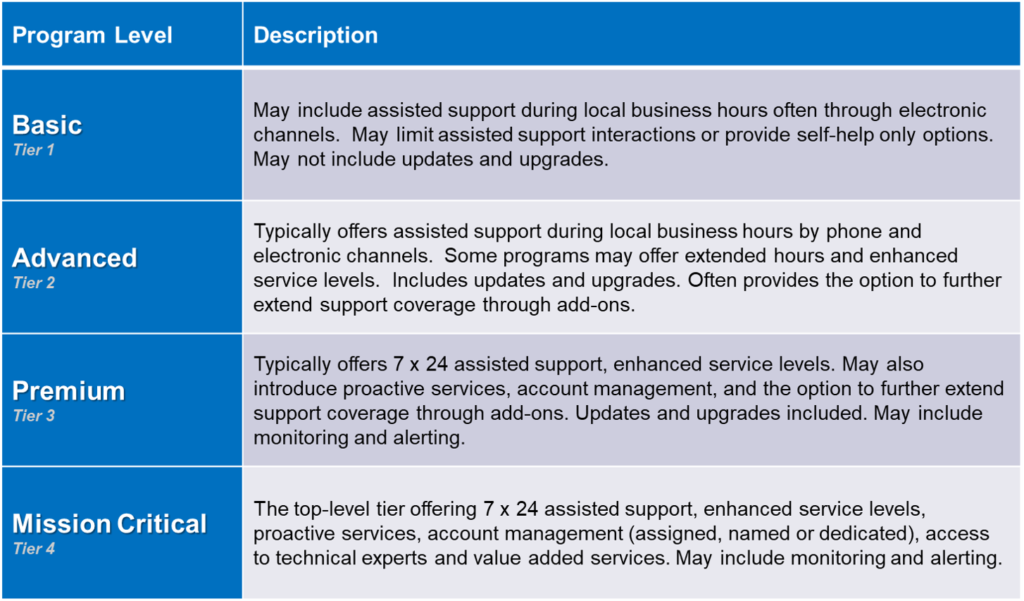How much should you charge for Support? It’s a driving question as your organization seeks to drive recurring revenue growth. And it’s a balancing act.
Setting the correct price for your Support programs begins with a baseline understanding of what your market will bear. Ultimately, though, you must base your pricing on the type and level and entitlements you offer.
Let’s explore a Support pricing model that’s been shown to work equally well for businesses and their customers.
Calculating Average Support Program Price
The average prices for Support programs range from 15.6 percent for a basic level of support to more than 26 percent for a high-end premium program. Prices vary based on the entitlements offered and the ways that pricing is structured. Here are a few considerations:
Net vs. List
Pricing may be based on a percentage of either a product’s list price or its net price after discounts.
Add-ons and Fixed Fees
Some Support programs consists of a fee tied to a percentage of either product list or net price plus add-ons. Add-ons are often associated with optional entitlements such as named support resources (i.e., designated support engineers and/or account managers).
Adjustment Fees
The price of support in the first year is often not the price a customer will pay in subsequent years. Support prices typically include annual adjustment fees to account for inflationary factors.
Pricing by Support Program Tiers
Support pricing is typically established by program level or tier. It is not uncommon for support portfolios to consist of two or more tiers with names like Silver, Gold and Platinum. Although support programs may sound alike, they often vary from vendor to vendor. For the purposes of establishing baseline pricing benchmarks ServiceXRG has normalized support programs into the four distinct tiers described below. Classification is based on the underlying program entitlements and not on the program names.
Support Program Tier Classifications
Average Support Program Price

Establishing Support Prices
The price of Support must be set at a level sufficient to cover delivery costs, yet not too high to discourage customers from buying. Customers are likely to have preconceived ideas about how much (or how little) Support should cost based on their experiences with other technology vendors. If your “gold” support is priced at 23% of product list price but other vendors price that level at 18%, customers may perceive that your prices are too high — even if you offer more for the price.
It is imperative that you price Support reasonably so that you can make a compelling case that the benefits outweigh the costs to the customer.
Making the Case for Services
Selling services demands that you establish a credible and compelling value proposition built upon the entitlements customers want and need from services balanced with a reasonable and justifiable price level.





